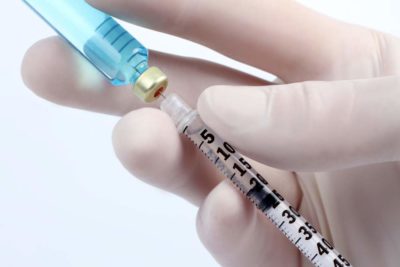Harm Reduction Policies and the Rise of Safe Injection Houses

Worldwide statistics regarding death by overdose look comparably grim, in this year’s lead-up to International Overdose Day (August 31). The United Nations’ 2016 Drug Report estimated that in 2014 (the latest year for which there are figures), overdose accounted for up to a half of all drug-related deaths, with opiates involved in most of these cases.
Against this backdrop at home and abroad, a public health movement is afoot to reduce overdose fatalities and other dangers of illicit drugs. It’s known broadly as “harm reduction,” and it is probably known best by its most controversial feature: safe injection houses. This article takes a closer look at this growing development in global drug policy, with a view to showing how harm reduction policies are an indication of a larger move (both globally and in this country) toward decriminalizing drug abuse and instead focusing more resources on its treatment.
Harm Reduction and Safe Injection Houses
Harm reduction initially began in Europe in the 1970s as an effort to reduce mortality rates among drug addicts who could not achieve abstinence from drugs. The concept of harm reduction “covers a range of interventions, the common feature of which is merely that they do not aim for abstinence,” according to an article in the International Journal of Drug Policy. In other words, harm reduction assumes that abstinence is simply not an option, and on that basis, works to develop interventions that will at least curb the harm of drug abuse, if not the abuse itself.
Legalized “safe injection houses”—(the word “safe” is a misnomer, because injecting an unregulated substance into the bloodstream is, by definition, not safe)—are one offshoot of this approach. These are “legally sanctioned and supervised facilities designed to reduce the health and public order problems associated with illegal injection drug use,” according to an article in the British Medical Journal.
Safe injection houses are grounded on the assumption that for some users, the best-case scenario is not recovery from an addiction, but rather untreated addiction without the dangers of overdose or the disease risks of sharing needles, such as HIV virus and/or Hepatitis C exposure. These supervised injecting facilities (SIFs) therefore provide illicit drug users with a safe, medically monitored space in which to shoot up, so that heroin and other illicit users might enjoy access to clean needles, emergency care in cases of overdose, and (if desired) counseling about rehab, treatment and other health service options.
The Rise of Safe Injection Houses: Data on Success and Stats
For at least some of those who make their way to a safe injection facility, treatment for drug addiction can be an eventual outcome. For example, a study of patients at safe injection houses in Vancouver, British Columbia and Sydney, Australia (where these facilities are legal) found that patients who were monitored while they used heroin were more likely to end up in treatment than those who were not monitored.
A scientific review in 2014 of 75 research studies found safe injection facilities reduced rates of overdose—and with respect to other key indicators of success, harm reduction strategies have allegedly shown promise. Research suggested harm reduction strategies such as needle exchange and methadone maintenance were indeed associated with reductions in drug use, disease, crime, unsafe injection behaviors, drug related deaths and improvements in employment and interpersonal relationships among IV drug users.
Today at least eight countries worldwide host safe or supervised injection spaces. The majority of these sites are in Europe. (Portugal, for example, has been touted as a glowing success story in this area.) A noted exception on this list is the United States. In 2015, Vancouver, Canada supposedly offered the only safe injection facility in all of North America.
That may be changing, however. A number of U.S. cities are reportedly now considering the prospect of legalized, “safe injection houses”—among them, San Francisco, Seattle and Boston, where, according to a recent report by National Public Radio, there is growing momentum around a supervised injection facility for heroin users.
Harm Reduction for Alcohol and Tobacco
Since its inception as an intervention for illicit drug use, harm reduction approaches have reportedly shown promising results for alcohol- and tobacco-related health problems as well. There is now a good deal of empirical evidence supporting harm reduction as an effective form of prevention and treatment for alcohol-related problems, for example. Other studies purport similarly promising reductions in health problems from cigarette and tobacco use, thanks to various harm reduction measures.
Harm Reduction vs. Drug or Alcohol Treatment
What’s important to note here is a key difference in goals between harm reduction strategies and drug and alcohol treatment programs. Take, for example, an addiction to heroin. A drug or alcohol treatment center would work directly to treat the root causes of a heroin addiction, via detox from heroin followed by a combination of medication and behavioral therapies. The direct goal would be freedom from heroin, recovery and a life that is “happy, joyous and free” without heroin.
With harm reduction strategies, in contrast, the most direct goal really is what the name itself implies: “harm reduction.” In this case, the first concern is sparing the user and greater society from the negative and harmful externalities of the addictive behavior. Treating the addiction and its root causes may or may not be the positive end result.

